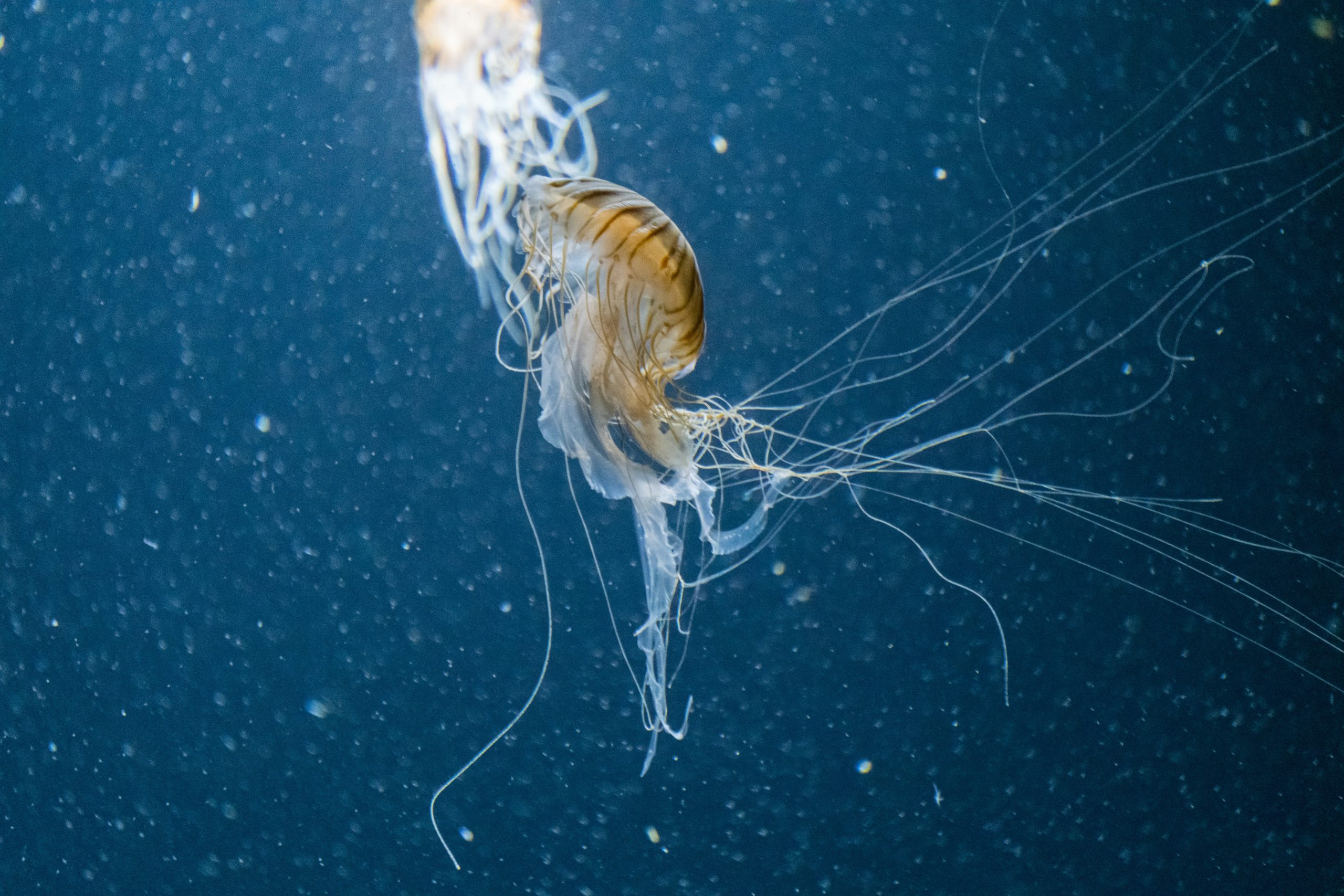Table of Contents
![]()
Introduction
Cephalopods, a fascinating class of mollusks, are renowned for their unique characteristics, including bilateral symmetry, a prominent head, and a set of specialized tentacles. They include species like octopuses, squids, and cuttlefish. In marine ecosystems, cephalopods play crucial roles as predators and prey, contributing to the balance of oceanic environments. This article delves into the world of aquarium cephalopods, exploring their common species, habitat needs, diet, care, reproduction, and the ethical considerations of keeping them in captivity.
Overview of Common Aquarium Cephalopods
Octopuses
Octopuses are among the most intriguing cephalopods, known for their intelligence and complex behaviors. In aquariums, the following species are commonly kept:
- Octopus vulgaris (Common Octopus): Recognizable by its large size and diverse color patterns, this species is often found in temperate waters. However, due to its size and complex care requirements, it is less commonly kept in home aquariums.
- Octopus bimaculoides (Bimac Octopus): Known for its smaller size and distinctive blue rings, the Bimac Octopus is a popular choice for aquarium enthusiasts. Its smaller size makes it more suitable for home tanks.
- Octopus cyanea (Day Octopus): This species is known for its vibrant colors and patterns, which can change rapidly. It is also recognized for its diurnal behavior, being active during the day.
Octopuses are celebrated for their problem-solving abilities and escape artistry, often using their dexterous arms to manipulate objects and solve puzzles.
Squids
Squids are dynamic and agile cephalopods, and in aquariums, the following species are often observed:
- Euprymna scolopes (Hawaiian Bobtail Squid): This small squid species is known for its bioluminescence and symbiotic relationship with light-producing bacteria. Its small size and relatively simple care make it a popular choice for aquarium enthusiasts.
- Loligo vulgaris (European Common Squid): Larger than the Hawaiian Bobtail, this squid is known for its fast swimming and complex behaviors. It requires a larger tank and more advanced care.
Squids use jet propulsion to move quickly through the water and exhibit schooling behavior in the wild. In captivity, their activity levels and social interactions can be fascinating to observe.
Cuttlefish
Cuttlefish are notable for their impressive camouflage abilities and unique cuttlebone. The following species are commonly kept in aquariums:
- Sepia bandensis (Dwarf Cuttlefish): This smaller cuttlefish species is favored for home aquariums due to its manageable size and vibrant colors. It exhibits remarkable color-changing abilities, which are used for communication and camouflage.
- Sepia officinalis (Common Cuttlefish): Known for its larger size and distinctive cuttlebone, this species requires a more spacious tank and sophisticated care.
Cuttlefish possess specialized cells called chromatophores that allow them to change color and texture, aiding in their camouflage and communication.
Habitat and Tank Requirements
Tank Setup
- Size and Shape Considerations: Cephalopods require ample space to thrive. Octopuses, squids, and cuttlefish all benefit from larger tanks with a horizontal layout. For octopuses, a tank size of at least 100 gallons is recommended, while smaller species may need slightly less space.
- Water Conditions: Maintaining appropriate water conditions is critical. Cephalopods generally require a temperature range specific to their species, usually between 72°F and 78°F (22°C – 25°C). Salinity and pH levels must also be closely monitored to mimic their natural environment.
- Substrate and Decorations: Providing hiding spots and enrichment is essential. Cephalopods are known to use rocks, shells, and artificial structures for shelter and exploration. Live rock and well-planned decorations can also aid in their mental stimulation.
Compatibility with Other Species
Cephalopods are predominantly solitary and can exhibit aggressive behavior towards other tank mates. Therefore, it’s generally advisable to keep them in species-specific tanks. Some peaceful fish and invertebrates may coexist with cephalopods, but careful selection and monitoring are crucial.
Diet and Feeding
Nutritional Needs
In the wild, cephalopods consume a diet of crustaceans, small fish, and other marine organisms. In captivity, their diet can be supplemented with:
- Octopuses: Typically fed a diet of shrimp, crabs, and small fish. They may also enjoy live prey to stimulate their natural hunting behaviors.
- Squids: Prefer a diet of small fish, shrimp, and other soft-bodied prey.
- Cuttlefish: Feed on shrimp, small fish, and other small marine organisms. They may also require live food to maintain their hunting skills.
Feeding Behavior
Cephalopods are skilled hunters and use various techniques to capture their prey. In captivity, feeding can be done through hand-feeding or providing live food, which encourages natural hunting behaviors and mental stimulation.
Health and Care
Common Health Issues
Cephalopods can suffer from a range of health issues, including diseases and parasites. Common problems include:
- Disease: Symptoms such as unusual skin changes or lethargy may indicate health issues. Treatment options vary depending on the specific condition.
- Parasites: Regular monitoring and treatment are necessary to prevent parasitic infestations, which can affect their overall health.
Maintenance Practices
- Regular Tank Maintenance: Consistent water changes, equipment checks, and monitoring water quality are essential to maintaining a healthy environment for cephalopods.
- Behavioral Observations: Observing behavioral changes can provide insights into the health and well-being of cephalopods. Stress or discomfort can manifest in various ways, requiring prompt attention and care.
Reproduction and Lifespan
Reproductive Strategies
Cephalopods have diverse reproductive strategies:
- Octopuses: Typically lay eggs that are cared for by the female until hatching. Some species exhibit complex mating behaviors and parental care.
- Squids: Reproduce by releasing eggs into the water, which develop into larvae. Many squid species do not provide parental care.
- Cuttlefish: Lay eggs that are often attached to substrates. The eggs develop into juvenile cuttlefish without significant parental involvement.
Lifespan
Cephalopods generally have relatively short lifespans compared to other marine animals:
- Octopuses: Lifespan ranges from 1 to 3 years, depending on the species.
- Squids: Lifespan can vary from 1 to 2 years.
- Cuttlefish: Typically live around 1 to 2 years.
Factors such as tank conditions and diet can influence their longevity in captivity.
Conservation and Ethical Considerations
Impact of Captivity on Wild Populations
The collection and trade of cephalopods for aquariums can impact wild populations. Sustainable practices and regulations are essential to minimize environmental effects and support conservation efforts.
Ethical Care
Providing ethical care involves:
- Proper Care and Enrichment: Ensuring that cephalopods receive appropriate tank conditions, diet, and enrichment to meet their physical and mental needs.
- Research and Education: Using aquariums as a platform for research and education to promote understanding and appreciation of cephalopods and their conservation.
Conclusion
The world of aquarium cephalopods is rich with diversity and complexity. From the intelligent octopus to the agile squid and the color-changing cuttlefish, these remarkable creatures offer a unique glimpse into marine life. Understanding their habitat needs, dietary requirements, and care practices is crucial for successful and ethical husbandry. As technology and knowledge advance, the future of cephalopod care in aquariums holds exciting possibilities for both enthusiasts and researchers alike.
Share This





Be the first to comment